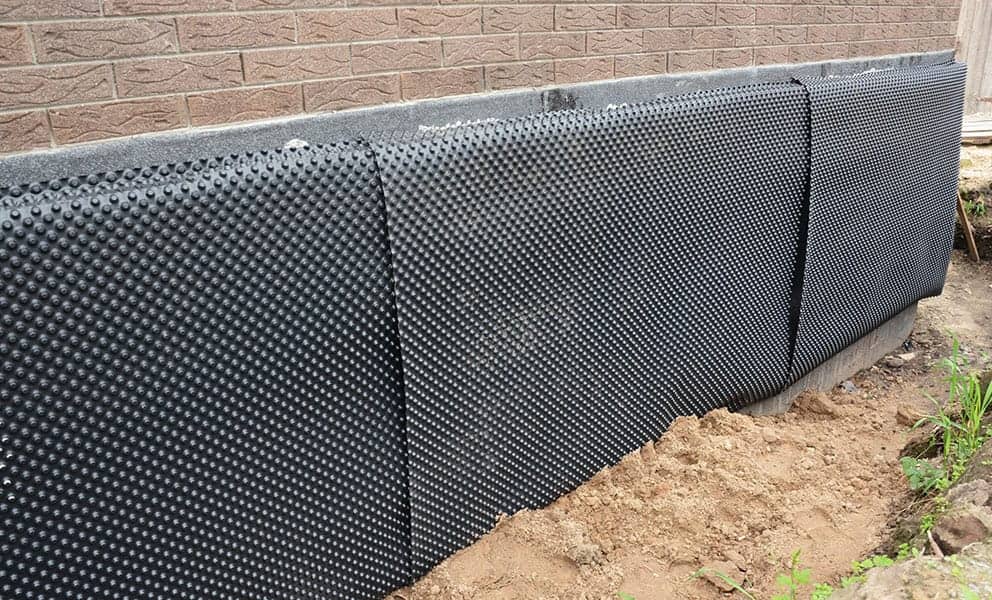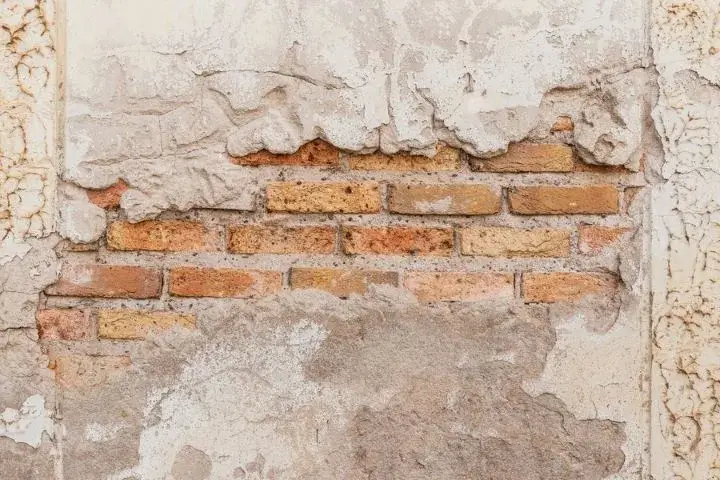Exploring the Numerous Techniques and Solutions for Effective Damp Proofing
Wetness in structures presents considerable obstacles to both architectural honesty and interior air top quality. Numerous techniques and solutions have emerged to battle this pervasive issue. From standard damp-proof membranes to cutting-edge chemical therapies, each method offers special benefits. Understanding these choices is vital for reliable dampness control. Nonetheless, picking the appropriate remedy depends upon certain building conditions and needs, prompting further exploration right into one of the most effective damp proofing approaches available.
Recognizing the Reasons For Moisture
Moisture can occur from numerous sources, comprehending these reasons is important for effective remediation. Generally, wetness stems from 3 main resources: increasing damp, penetrating damp, and condensation. Rising damp occurs when groundwater takes a trip up-wards via permeable materials, such as brick or rock, frequently as a result of an absence of a reliable obstacle (mould removal newcastle). Penetrating moist is normally triggered by exterior elements, consisting of roofing leaks, malfunctioning seamless gutters, or damaged wall surfaces, permitting water to infiltrate a home. Condensation, on the various other hand, results from excess dampness airborne, frequently worsened by poor ventilation and temperature level distinctions, bring about water droplets basing on surfaces. Recognizing these underlying problems is essential, as each kind of wetness calls for a tailored technique for removal. Correct evaluation aids in identifying the most effective services, eventually guarding the structural integrity of a building and improving interior air top quality
Typical Damp-Proof Membrane Layers

Chemical Damp-Proofing Solutions
Chemical damp-proofing solutions use a cutting-edge method to avoid moisture invasion in structures. These methods usually include the application of liquid chemicals that permeate masonry and develop an obstacle versus increasing damp. Commonly used chemicals consist of silanes, siloxanes, and other water-repellent representatives that respond with surface materials to develop a hydrophobic layer.The application process usually calls for exploration openings into the walls, injecting the chemical service, and enabling it to treat. This approach is specifically useful for older frameworks where conventional damp-proof membrane layers might be not practical. Chemical damp-proofing can be much less disruptive and much more economical than substantial remodelling projects.While effective, these remedies depend on correct application and ecological conditions for peak efficiency. mould treatment newcastle. Normal upkeep and monitoring are important to ensure the longevity of the damp-proofing therapy. On the whole, chemical damp-proofing represents a flexible alternative for protecting buildings against moisture-related damages
Tooth Cavity Wall Surface Building And Construction Methods
Dental caries wall surface building methods use countless benefits, especially in wetness control and power efficiency. By including an air gap in between 2 layers of stonework, these walls effectively minimize water access while boosting insulation. This mix not just safeguards structures from dampness yet also contributes to lowered power intake.
Advantages of Tooth Cavity Walls
When thinking about efficient moist proofing approaches, the advantages of cavity walls attract attention plainly. Cavity walls contain two different layers, developing an air void that efficiently decreases wetness infiltration. This layout minimizes the danger of dampness, as the external wall surface acts as a barrier versus rainfall and water access. In addition, cavity wall surfaces improve thermal insulation, which adds to power performance by reducing heat loss. They also provide audio insulation, helping to develop a quieter interior setting. Additionally, the air space allows for ventilation, which aids in dampness control and reduces the likelihood of mold and mildew development. These benefits not only enhance the general comfort of a building yet additionally add to its durability and structural integrity.
Dampness Control Strategies
Reliable wetness control strategies are crucial in tooth cavity wall construction to guarantee long-term defense versus wetness. One main technique involves the incorporation of weep holes, which promote water drainage from the dental caries, stopping build-up. In addition, using breathable membranes can assist take care of moisture levels while enabling trapped vapor to run away. Correct positioning of insulation is likewise vital, as it should not block water drainage paths. Making certain that the outer fallen leaves of the dental caries wall surface are built with waterproof materials enhances overall longevity. Normal upkeep checks are important to recognize any kind of blockages or damage early, securing the framework's honesty. Inevitably, a mix of these strategies forms a robust protection versus moisture breach in cavity wall surfaces.
Insulation and Energy Efficiency
Insulation plays a crucial role in enhancing energy efficiency within cavity wall surface construction. By incorporating insulating materials, these walls produce a thermal obstacle that reduces heat loss and minimizes energy consumption. Effective insulation not just assists preserve a steady indoor temperature but likewise alleviates the risk of dampness, as it protects against condensation within the wall tooth cavity. Different strategies, such as using rigid foam boards or mineral wool, can be employed to accomplish ideal insulation performance. In addition, correct installation is necessary to ensure that gaps and gaps are minimized, which can or else jeopardize energy performance. Ultimately, a well-insulated cavity wall surface contributes significantly to overall sustainability and decreases heating & cooling prices for home owners.
Outside Damp Proofing Methods
Exterior wet proofing techniques are important for safeguarding structures from wetness seepage. 2 effective techniques include the application of water resistant membranes and the setup of French drains. These options help minimize water accumulation and protect the integrity of buildings.
Waterproof Membrane Layer Application
While different methods exist for protecting against moisture access, the application of waterproof membranes stays a highly efficient exterior moist proofing technique. These membrane layers are normally made from materials such as polyethylene, rubber, or changed asphalt, giving a durable obstacle against water infiltration. The installation process includes using the membrane to the external surfaces of structures or wall surfaces, making sure full coverage to avoid leakages. Correct adhesion and securing at joints are important to maximizing efficiency. Water resistant membrane layers can be applied in various kinds, consisting of fluid coverings and sheet membranes, enabling versatility based on the particular demands of the structure. This technique not only safeguards buildings from moisture yet also enhances their durability and structural stability.
French Drain Setup
One reliable technique for taking care of groundwater and protecting against wetness accumulation around a building's foundation is the installation of a French mould removal newcastle drain. This drainage system includes a trench filled with gravel and a perforated pipe that redirects surface water away from the structure. Proper installment calls for mindful preparation, making certain that the drainpipe inclines away from the structure to assist in suitable water flow. Additionally, the location of the drainpipe is essential; it needs to be placed in locations susceptible to pooling or excess moisture. Regular maintenance, consisting of clearing up particles from the gravel and ensuring the pipe continues to be unblocked, is necessary for long-lasting efficiency. Eventually, a well-installed French drain can greatly minimize the threat of water-related concerns in cellars and structures.
Interior Waterproofing Strategies
Inside waterproofing approaches are important for safeguarding a building's interior from wetness seepage and possible water damages. These strategies commonly involve the application of specific products and methods developed to create a wetness obstacle within the framework. One usual strategy is using waterproof layers or sealers on wall surfaces and floors, which avoid dampness from penetrating surfaces.Additionally, mounting indoor drainage systems, such as sump pumps, can properly manage water build-up in cellars and creep rooms. An additional approach involves making use of vapor obstacles, which are installed to inhibit dampness activity from the ground right into living spaces.Moreover, resolving any kind of fractures or gaps in walls or structures with suitable sealers guarantees a complete protection against water invasion. By implementing these indoor waterproofing methods, home proprietors can greatly reduce the threat of mold growth, architectural damages, and other moisture-related problems. Proper execution of these techniques is vital for long-term security and structure honesty.
Normal Maintenance and Evaluation Practices
Regular upkeep and inspection techniques are crucial for guaranteeing the long-lasting efficiency of moist proofing services in any structure. Regular checks allow property proprietors to recognize very early indications of wetness invasion, such as peeling paint, mold growth, and musty smells. These indications can signal underlying issues that require prompt attention.Inspections need to be performed at the very least every year, concentrating on susceptible areas like cellars, creep areas, and outside wall surfaces. During these assessments, homeowner need to check out sealants, drainage systems, and ventilation to validate they operate correctly.Additionally, keeping downspouts and gutters is essential, as clogged systems can lead to water build-up near the structure. Applying a normal maintenance timetable, together with timely repairs, can considerably extend the life expectancy of moist proofing actions and shield the structural honesty of the building. Proactive measures eventually add to the overall health and wellness of the living atmosphere.
Regularly Asked Questions
For How Long Does Damp Proofing Usually Last?
The period of damp proofing efficiency differs, usually lasting in between 20 to 50 years. Variables such as application high quality, ecological conditions, and upkeep practices significantly affect the longevity of the damp proofing treatment.

Can I Damp Evidence My Home Myself?
The private considered the expediency of DIY damp proofing. With proper research and the ideal products, it is possible. Nonetheless, they also recognized the importance of professional assistance to guarantee long-lasting effectiveness and prevent future issues.
What Are the Indicators of Ineffective Damp Proofing?
Indications of inefficient moist proofing consist of relentless stuffy odors, noticeable mold development, peeling off paint, wet patches on wall surfaces, and wood degeneration - damp removal newcastle. Property owners need to address these problems quickly to stop further damages and health and wellness concerns
Does Damp Proofing Affect Indoor Air Quality?

Just How Much Does Specialist Damp Proofing Price?
Specialist wet proofing prices vary significantly, commonly ranging from $1,000 to $5,000 relying on the residential property's dimension, the level of the damp issue, and selected techniques. Each scenario calls for a customized analysis for exact pricing. Typically, moisture originates from three key sources: climbing damp, permeating wet, and condensation. When considering efficient moist proofing approaches, the benefits of tooth cavity walls stand out plainly. External wet proofing methods are important for protecting frameworks from moisture seepage. While various approaches exist for protecting against wetness access, the application of water-proof membranes stays a highly effective external damp proofing strategy. Signs of inadequate moist proofing consist of persistent musty odors, visible mold development, peeling off paint, wet spots on wall surfaces, and wood degeneration.
Comments on “Fixing condensation problems permanently with mould treatment newcastle”